People
Principal Investigator
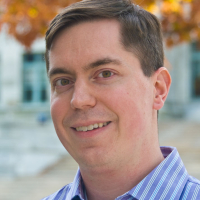
Joseph Loparo
Joe grew up Cleveland, OH where he attended Case Western Reserve University. At Case he developed a deep interest in using optical spectroscopy to probe the dynamics of molecules, spending four years in the laboratory of Cather Simpson where he studied the photophysics of metalloporphyrins. For his graduate work Joe joined the laboratory of Andrei Tokmakoff in the Dept. of Chemistry at MIT. While there Joe developed and applied ultrafast infrared spectroscopies to probe the dynamics of water's hydrogen bonding network, providing some of the first direct observations of the intermolecular motions of hydrogen bonded water molecules. Upon graduating Joe joined the lab of Antoine van Oijen, then at HMS, to apply his optical background to problems in mechanistic biochemistry. As a Jane Coffin Childs postdoctoral fellow Joe studied the dynamics of the replisome the multiprotein machine that carries out DNA replication. In July 2010 he started his own lab at Harvard Medical School.
Lab Members
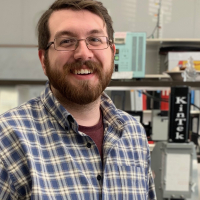
Brandon Case
Brandon studied chemistry as an undergraduate at Western New England University where he became interested in enzymatic reactions during research with Dr. Anne Poirot. To continue his study of enzymes, he pursued a PhD at Wesleyan University in Molecular Biology & Biochemistry with Dr. Manju M. Hingorani. At Wesleyan, Brandon learned to uncover molecular mechanisms using transient kinetic assays. His graduate research focused on understanding the initiation of bacterial DNA mismatch repair (MMR) and nucleotide excision repair (NER), in which MutS and UvrA2 mechano-chemically couple their actions with ATP hydrolysis to initiate DNA repair. During this work, Brandon developed an interest in single-molecule experiments to expand his ability to understand molecular mechanisms. This led him to join the Loparo Lab, where he now studies end processing during non-homologous end joining using single-molecule techniques. Outside of lab, Brandon enjoys spending time with his family, cooking, and astronomy.
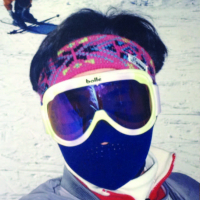
Seungwoo Chang
As a postdoc, my research interest is focused on understanding how cells faithfully copy and transmit their genetic information. In reality, this is a very challenging task in that genomic DNA is constantly damaged. Particularly, I have been studying translesion synthesis (TLS), by which cells tolerate replication-blocking DNA lesions. To understand how TLS is regulated in E. coli cells, I am combining multidisciplinary approaches ranging from genetics to fluorescence imaging.
During my PhD years in biophysics, I studied how a G protein-coupled receptor signaling is regulated with a FRET-based sensor that I developed.

Lang Le
Lang hails from Connecticut and is currently a senior at Harvard, studying Human Developmental and Regenerative Biology. Since joining the Loparo Lab, he has taken an interest in studying the translesion synthesis (TLS) pathway of DNA damage repair. Though most of his work has been on TLS polymerases Pol IV and Pol V in E.coli, his current project is in analyzing the SOS-response in P.aeruginosa. Beyond the lab, Lang loves playing classical guitar, crocheting triceratops, and watching Tom & Jerry.
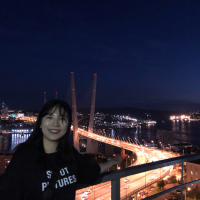
Hyunjee Lee
Hyunjee graduated from Kyunghee University with a major in food science and biotechnology. During her studies as an undergraduate, she started to be interested in molecular biology. After graduation, she entered the MS and PhD programs in the Life Science department at GIST. There, she learned single molecule and biochemical techniques to investigate the interaction between protein and DNA, enzymatic reaction kinetics, and structural dynamics. Her research as a graduate student focused on the mechanism of ribonuclease H on RNA:DNA hybrids during DNA replication with single molecule FRET. Outside the lab, Hyunjee enjoys playing and watching tennis.
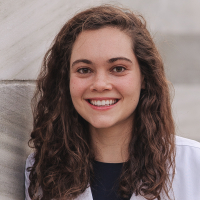
Martha Longley
Martha grew up in Madison, Wisconsin. She graduated from Yale where she studied the mechanisms of isotopic fractionations during different biogeochemical processes central to the regulation of carbon dioxide throughout Earth's history. She then did a fellowship in genetics at the NIH. At Harvard, she made her way from geochemistry to biochemistry and is currently a joint MD/PhD student in the Loparo and Walter labs studying microhomology-mediated end-joining. She loves running and hiking.
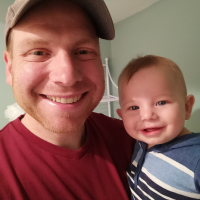
Andrew Moreno
Andrew is a native of Connecticut and attended Eastern Connecticut State University to study biochemistry. While working on antibody engineering at Alexion Pharmaceuticals, Andrew became fascinated with the physical properties of macromolecular interactions and decided to attend graduate school at Wesleyan University to pursue this interest. There he worked with Professor Ishita Mukerji on projects involving the photochemistry of fluorescent base analogs and the nature of protein-DNA interactions. After a short post-doctoral position in the Wade lab at John Hopkins School of Medicine where his focus was on the rules governing promiscuous ligand recognition by multi-drug resistance proteins, he moved back north to Boston to join the Loparo Lab to work on developing a molecular model for non-homologous end-joining, a DNA double-strand break repair mechanism.
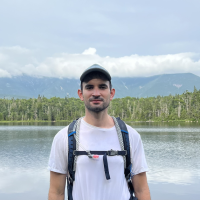
Daniel Same Guerra
Daniel was born in Cuba but grew up in the suburbs of Philadelphia. As an undergraduate at Princeton University, he worked in the laboratory of Thomas Silhavy to characterize the role of YejM in regulating LPS biosynthesis. After graduating in 2020 with a B.S. in molecular biology, he became a research assistant in the laboratory of Cigall Kadoch at Dana Farber Cancer Institute. Here, he studied the function of mSWI/SNF (BAF) chromatin remodeling complexes in normal and oncogenic cell states. He then joined the Chemical Biology program in 2022, and the Kruse and Loparo laboratories in 2023. Daniel’s current research is focused on understanding the regulatory mechanisms of protein complexes that build the bacterial cell wall. In his free time, he enjoys cycling, running, hiking, and trying different espresso beans.
Pradeep Sathyanarayana
Pradeep hails from Bangalore, in the southern part of India. He completed his Bachelor in Engineering in Biotechnology from Sir. MV Institute of Technology, where he was interested in developing green systems for nanoparticle synthesis. He later joined as a Graduate student at the Centre for BioSystems, Science and Engineering in the Indian Institute of Science. Here he was jointly advised by Prof. Sandhya Visweswariah and Prof. Ganapathy Ayappa. He was interested in understanding the mechanisms associated with membrane damage by pore-forming toxins and applied artificial membrane systems, single-molecule imaging and spectroscopy to address these questions. In the Loparo Lab, he is studying the mechanism of pathway choice to resolve eukaryotic DNA double strand breaks. Outside the lab, Pradeep is a big fan of Football (soccer) and is a big Arsenal fan. He enjoys books, stand-up comedy and exploring the city.
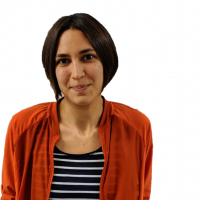
Irina Shlosman
Irina grew up in Moscow, Russia, and moved to the US to attend Dartmouth College. There, she majored in biophysical chemistry and through her undergraduate thesis became interested in biophysical research that investigates the interplay between protein structure and function. She then moved to Bethesda for a two-year fellowship at the NIH to study transporter mechanism and function, jointly supervised by Dr. José Faraldo-Gómez and Dr. Joe Mindell. Following her time at the NIH, she became a graduate student at the Biophysics program at Harvard and joined the Kruse and Loparo groups in 2019 to work on elucidating the mechanism and regulation of cell wall biogenesis with single-molecule imaging. In her spare time, Irina enjoys going to the symphony, climbing and backpacking with friends, as well as reading soulful Russian classics.

Miloš Tišma
Tišma grew up in Belgrade, Serbia, where he attended his bachelor’s studies in Molecular Biology and Physiology. This is where he became deeply interested in the tiny biological phenomena that underlie our behaviour and existence. He pursued his passion for research in Germany where he completed his Master’s degree and started his research in biophysics on bacteria. He continued his newly discovered love for biophysics in the flatlands of the Netherlands, where he completed his PhD in the lab of the distinguished Prof. Cees Dekker. He is now working on antibiotic resistance mechanisms in bacteria and bacterial mutagenesis, by using a combination of single-molecule biophysics, bacterial genetics and biochemistry. Outside of work he enjoys travelling, fitness, martial arts, reading philosophy and playing table tennis.
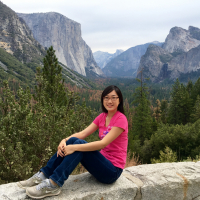
Yufan Wu
Yufan grew up in Hangzhou, China. After a year at Zhejiang University, she came to the US to continue her undergraduate education in Chemistry at University of Wisconsin-Madison. She realized her passion in biophysical chemistry while studying the energy landscape of protein folding in the laboratory of Prof. Silvia Cavagnero. She then moved to Stanford for her Ph.D work, where she investigated the origin of enzyme catalysis using vibrational Stark spectroscopy and crystallography under the guidance of Prof. Steven Boxer. The more she learns about proteins the more she is fascinated by their remarkable versatility. She is now excited to learn how protein complexes coordinate the repair of DNA breaks with single-molecule techniques. Outside of work she enjoys travelling, all kinds of sports, board games and books.
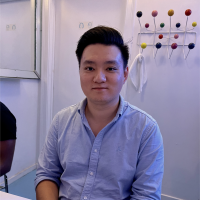
Jinghang Zhang
Jinghang graduated from The Johns Hopkins University in 2020 with a degree in Biomedical Engineering. During his time as an undergraduate, he worked in the laboratory of Professor Taekjip Ha; there, he gained an appreciation for the power of single molecule biophysics. In the fall of 2021, he joined the Loparo lab to study how the recently discovered NHEJ factor PAXX contributes to the repair of DNA double-strand breaks. Outside of the lab, Jinghang enjoys testing new recipes in the kitchen, cycling, trying new restaurants, and playing with his cat, Autumn.
Affiliated Members
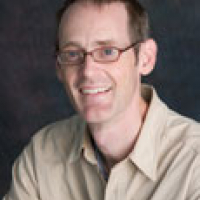
Allen Price
Allen holds a Ph.D. and M.S. in physics from the University of Washington and a Bachelor of Science in physics from California Institute of Technology. Allen most recently worked for Novartis Institutes of Biomedical Research, Inc. as a research investigator.
